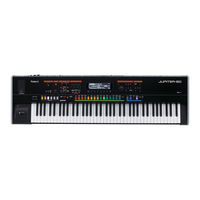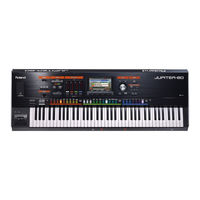
Roland Jupiter-50 Digital Synthesizer Manuals
Manuals and User Guides for Roland Jupiter-50 Digital Synthesizer. We have 4 Roland Jupiter-50 Digital Synthesizer manuals available for free PDF download: Owner's Manual, Release Note, Information Sheet, Supplementary Manual
Roland Jupiter-50 Owner's Manual (108 pages)
Sound Generator
Brand: Roland
|
Category: Synthesizer
|
Size: 26 MB
Table of Contents
Advertisement
Roland Jupiter-50 Information Sheet (5 pages)
Jupiter Roland
Brand: Roland
|
Category: Synthesizer
|
Size: 6 MB
Table of Contents
Roland Jupiter-50 Release Note (7 pages)
Brand: Roland
|
Category: Synthesizer
|
Size: 0 MB
Advertisement
Roland Jupiter-50 Supplementary Manual (4 pages)
JUPITER-50
Brand: Roland
|
Category: Synthesizer
|
Size: 1 MB



